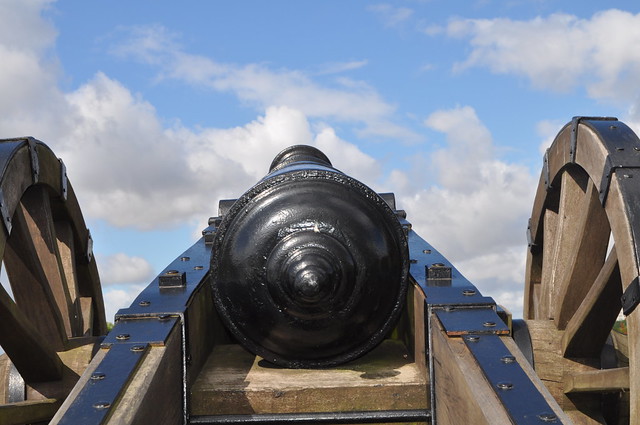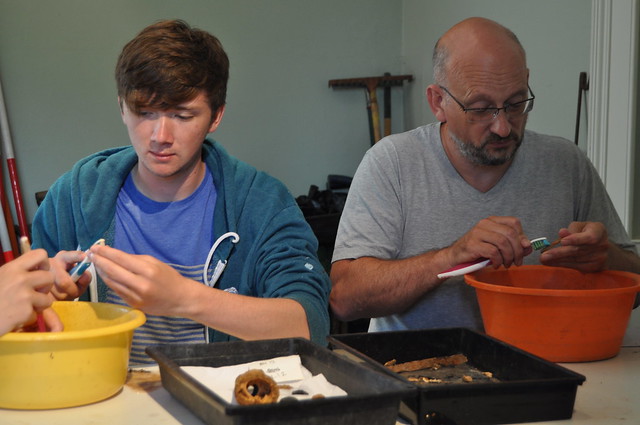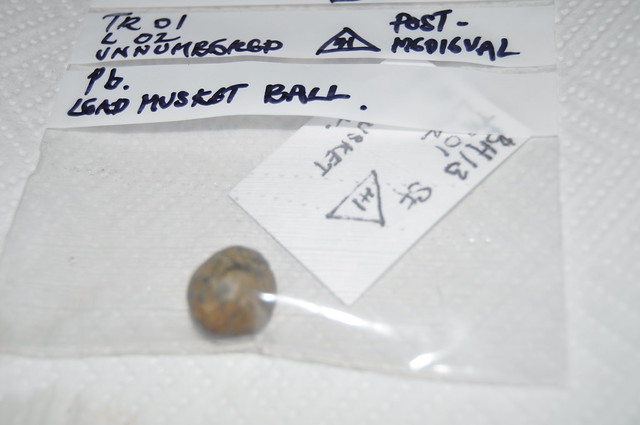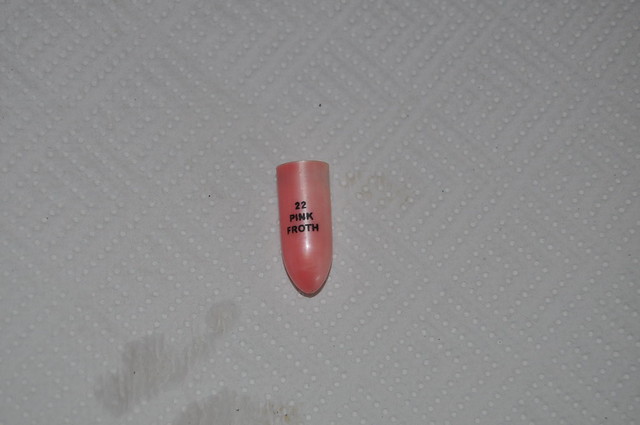Day 11 – Finds so far – by Mike
August 3rd 2013 – Basing House Dig – Day 11
INTRODUCTION

Basing House cannon
Saturday 3rd August – another day of digging for the Basing House archaeologists. There are undeniable groans, yawns and sleepy protestations at a time which most students believe should be legally outlawed for work (let alone consciousness) of any kind. Nevertheless, work was soon underway on the site, and the once shallow, grassy pits had swallowed most of the diggers to waist height by this point in the excavation.
On today’s agenda was the further trowelling of the chalky layer in an effort to secure the 1960 trench lines, alongside the first efforts at documenting the growing trench sections and stratigraphy. The trowelling itself is now at a stage where finds are becoming increasingly common-place (especially those of the Roman variety), and the monotonous job of shovelling out the soil fill from the original 1960’s excavation (complete with rusty Carling cans and pink lipstick) is over. This influx of finds led me to Jude, the Medieval and Early Modern finds expert-:

Michael and Ian cleaning finds
Q: What is the most exciting find so far (in your opinion), and why?
A: Well there are two that stand out. Early in the dig a replica 17th Century slipware jug was found. I believe this shows both the broad extent of the discipline of archaeology and its ‘human face’ – finds such as these bring a wider cultural perspective to the site, as it indicates the continued interest in the English Civil War through different periods of modern history. This creates an interesting situation for archaeologists digging around Basing House, who often have to consider whether their finds are from the Early Modern period or from much more recent Civil War re-enactor societies.
The other significant find is a small Roman coin which managed to escape the 1960’s excavation. This is the first found on site, and when coupled with several other Roman finds on site, this strongly suggests Roman occupation. Acceleration of scientific techniques in the last few years such as Reflective Transformance Imaging (RTI) makes tiny finds such as this coin even more significant because of the improved history it gives surrounding Basing House.
Q: Is there an area of finds (or lack of) you’re disappointed with from this particular site?

Sophie and Will
A: I would have certainly liked more evidence of the original Civil War siege. Certainly the excavation of the 1960’s may have played a role in this lack of finds. It has attributed to the Basing House dig feeling like much more of a Roman and Iron Age affair, partly because previous excavators were less aware of identifying earlier archaeological finds, meaning much of it is still being found today. Already there is an abundance of Roman finds, such as locally made pottery, blank mosaic tile, Roman brick and the one coin already mentioned. However, the Civil War side of things has been unfortunately much less prolific, with only one musket ball being found in a site situated just next to Basing House. However, there is the rich ‘archaeology’ left behind by the 1960’s diggers!

Our first musket ball

Pink lipstick – help us date it!
Filed under: Day Eleven, Student Reporter, Summer Excavation Tagged: archaeology, Basing House, finds, student-reporter, undergraduate
